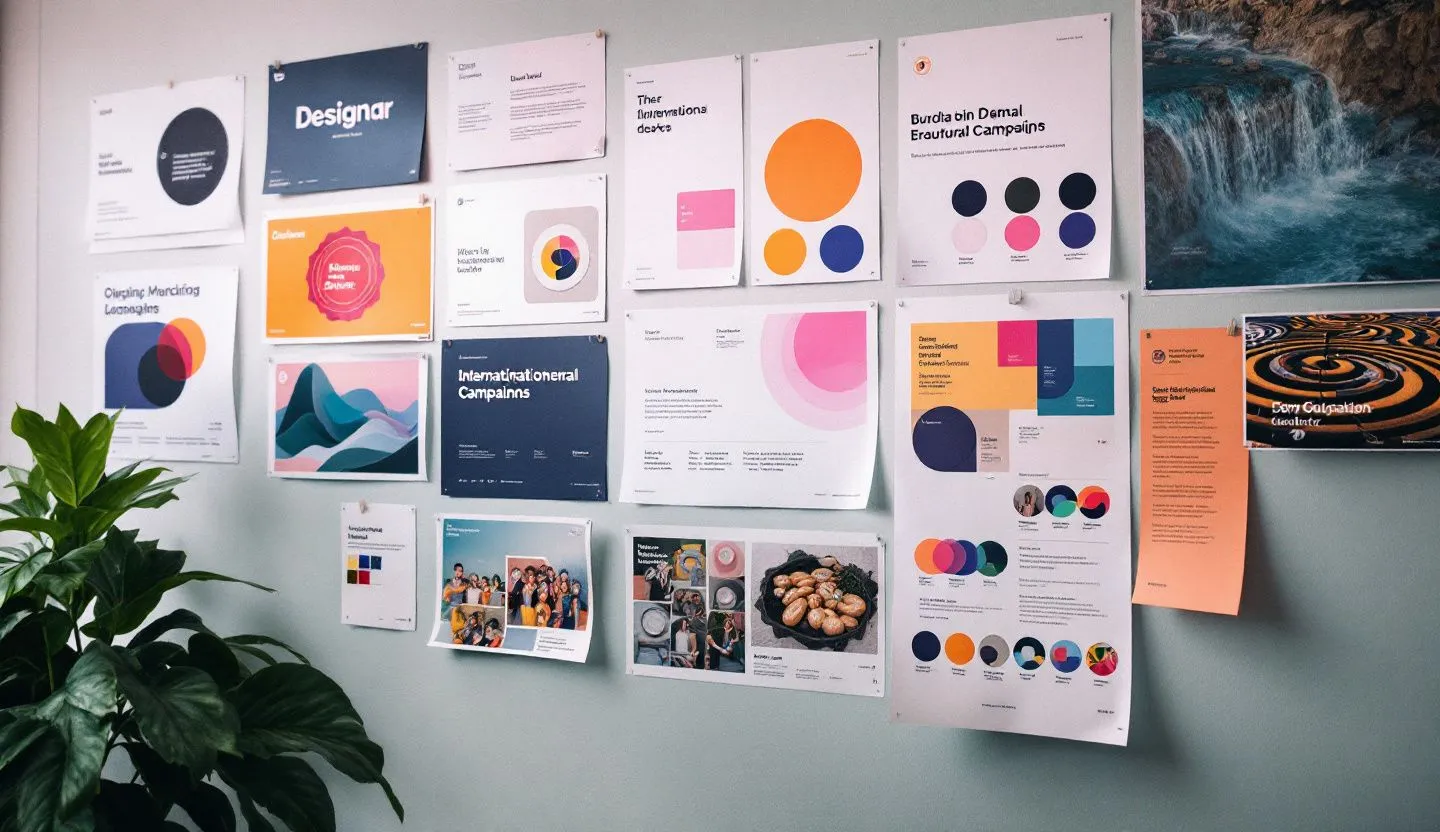Every enterprise marketer knows the feeling. You’re up against a global campaign launch with six languages, four regional variants, and a creative team already running at full tilt. The clock is ticking, and every extra round of manual tweaks to localize assets feels like a step backward. You’re not alone. We’ve all felt the friction between the dream of “design once, deploy everywhere” and the reality of scattered files, last-minute translation errors, and the gnawing anxiety that a single off-brand asset could slip through and confuse or even alienate a target market.
This is the daily tension we navigate. Brand consistency is non-negotiable, yet so is speed. Compliance and legal teams need control, but every extra checkpoint slows time-to-market. Meanwhile, partners and local teams ask for flexibility, and the old methods,manual copy-paste, endless back-and-forth emails, hand-edited design files,just don’t scale. If you’re reading this, you’re likely responsible for orchestrating that delicate balance, and you know firsthand how high the stakes are.
I’ve been in those campaign war rooms. I’ve seen creative directors, compliance officers, and marketing ops leaders huddled around screens, debating whether a line break in German will break the layout, or if the Japanese translation is squeezed so tight it’s unreadable. As a leader, I want a better way. I want to design once, translate everywhere, and automate the designs translation workflow so my team is focused on strategic impact, not repetitive manual labor.
Legacy workflows and their breaking point
Let’s be honest about where most of us started. For years, our translation workflow was a patchwork of manual steps stitched together with goodwill and late nights. The creative team would deliver a beautiful set of English-language assets, and then, like clockwork, the “localization scramble” would begin.
- Designers would create duplicate files for each market: This meant every change had to be tracked and updated across a dozen versions, creating a breeding ground for inconsistency and error.
- Translators would receive static PDFs or screenshots: They’d send back plain text in Word docs or spreadsheets, forcing designers to copy-paste translations,often introducing new typos or formatting issues along the way.
- Compliance teams checked every variant separately: Every iteration added delay, and the risk of missing a regulatory nuance increased with every manual step.
The result? Slower launches, ballooning costs, and a persistent sense that brand governance was always one step behind the pace of global growth. The pain wasn’t just operational, it was strategic. Teams spent too much time fixing the same problems, eroding creative morale and making it harder to invest in new, high-impact work.
What’s changed in global marketing
The pressure to scale content across markets isn’t new, but the stakes have never been higher. Today’s enterprise marketing teams are judged by their ability to deliver personalized, on-brand experiences at speed, everywhere. That means more channels, more languages, and more stakeholders than ever.
At the same time, technology has finally caught up to the vision. Automated designs translation workflow solutions are no longer a distant dream,they’re real, robust, and secure enough for even the most regulated industries. Cloud-based design systems, integrated translation management platforms, and AI-powered text fitting tools have transformed what’s possible.
What’s driving this shift? Three big forces come to mind:
- Audience expectations are rising: Customers expect localized, relevant messaging,not awkward translations or generic global campaigns. Brand leaders can’t afford to treat translation as an afterthought.
- Compliance and risk management have become central: As data regulations and brand standards tighten, the old wild-west approach to asset creation just isn’t viable. Automated tracking, audit trails, and secure workflows are now table stakes.
- The economics of scale demand efficiency: With marketing budgets under pressure, the cost of manual, bespoke asset creation is simply unsustainable. Teams need workflows that deliver more with less.
So the question is no longer whether to automate your designs translation workflow, but how to do it in a way that respects brand, reduces risk, and actually empowers your teams.
What an automated designs translation workflow looks like
Let’s paint a picture. Imagine you’re preparing a product launch with assets needed in 12 languages across five regions. Instead of duplicating design files for each language, you create a single master template in your design system. This template is structured to handle variable text lengths, different font sets, and even region-specific imagery,all without manual intervention.
- Translations are managed in a centralized platform: Content is exported directly from the design file into a translation management system. Translators work in context, previewing how their copy fits into layouts and making adjustments in real time.
- Automated text fitting and layout adjustment: When a German headline runs long, the system automatically resizes or reflows the text, preserving the design integrity. No more midnight email chains to adjust font sizes or squeeze in extra characters.
- Stakeholders review and approve in a single, secure environment: Compliance officers, legal reviewers, and local market leads see the live asset with their language in place, provide feedback, and sign off,all tracked for auditability.
- Once approved, final assets are exported in every required format and channel: No more copy-paste errors or version control nightmares.
That’s the vision. But what does it take to actually achieve it?
The building blocks of scalable design translation automation
As someone who’s helped guide enterprise teams through this transition, I’ve seen a few essential ingredients for success:
Design systems built for localization
It starts with the foundation. If your design system is rigid or assumes English is the only language, every downstream process suffers. We learned to build templates that anticipate translation: generous text boxes, flexible layouts, and clear usage guidelines for images and icons.
For example, our financial services team in Switzerland taught us the hard way that legal disclaimers in French and German can double the length of the English version. By planning for this up front, we avoided endless redesigns and could push localized assets live in hours, not weeks.
Integration with translation management platforms
The days of emailing Word docs are over. Modern automated designs translation workflows rely on seamless integration between design tools (like Figma, Adobe, or Desygner) and translation management systems (TMS). When the content is “live-linked,” translators can see exactly how their words fit the design, and designers aren’t left cleaning up after the fact.
This connection also powers real-time updates. If a product name changes or a compliance requirement shifts, you update the master content once, and every variant is instantly refreshed,no manual touch required.
Automated layout adaptation and smart text fitting
This is where technology really shines. AI-powered plugins and automation tools can automatically resize text, adjust spacing, and even flag design elements that won’t translate well across languages. In practice, this means a French tagline that’s 30% longer doesn’t wreck your hero image, and a Japanese headline with complex characters remains legible and on-brand.
These tools aren’t just for the creative team. Compliance and legal reviewers can trust that every asset meets accessibility and regulatory standards, regardless of language.
Centralized review and approval workflows
One of the biggest bottlenecks in the old process was chasing feedback from stakeholders scattered across email chains, PDFs, or Slack threads. Today’s automated designs translation workflow brings everyone into a single, secure environment. Reviewers can comment directly on live assets, see previous feedback, and approve with a click. Every step is logged for compliance, and nothing slips through the cracks.
Secure, auditable, and compliant by design
For regulated industries,think finance, healthcare, or government,security and auditability are non-negotiable. Modern automated design translation solutions offer granular permissions, encrypted data flows, and full audit trails. IT, legal, and compliance teams can rest easy knowing every asset is tracked and every change is documented.
Real-world results from automated translation workflows
This isn’t theory,it’s happening in the world’s most demanding enterprises. Let me share a few examples from teams I’ve worked with and observed.
Accelerating speed-to-market for a global retail brand
A Fortune 500 retailer needed to launch a holiday campaign in 18 markets, with assets spanning print, digital, and social. In the old days, this would have meant at least 80% of their designers’ time spent on localization and manual asset creation. By implementing an automated designs translation workflow, they cut turnaround time by 60%, reduced errors to near zero, and empowered local marketers to request last-minute changes without derailing the entire process.
Ensuring compliance in financial services
For a leading European bank, every marketing asset must be reviewed by compliance and legal, with strict requirements for audit trails and secure storage. By centralizing their design and translation workflow, they reduced review cycles from weeks to days, and compliance teams gained instant visibility into every asset,past and present. No more frantic searches for the “approved” version or midnight calls to legal.
Empowering creative teams to focus on strategy
Perhaps the most important outcome: creative teams get their time back. Instead of spending hours on repetitive manual updates, they’re freed to focus on high-impact work,developing new campaigns, refining brand storytelling, and partnering more closely with product and strategy teams. This shift from “production line” to “creative partner” is game-changing for morale and retention.
Making the leap: steps to automate your designs translation workflow
Shifting to an automated workflow is a journey, not a switch you flip overnight. Here’s what I’ve seen work best in large, matrixed organizations:
- Audit your current process and pain points: Gather your creative, marketing ops, compliance, and IT leaders. Map out every step,from initial brief to final delivery,and identify where manual work, errors, or delays occur. This clarity is essential for making the case for change.
- Define your requirements and non-negotiables: For us, it was brand consistency, regulatory compliance, and speed-to-market. For you, it might also include partner enablement, accessibility, or integration with existing DAM and CMS systems.
- Evaluate technology partners with an enterprise lens: Look for solutions that offer robust design system integration, open APIs, security certifications, and proven performance at scale. Don’t settle for “good enough”,your workflow is only as strong as its weakest link.
- Pilot with a high-impact campaign: Choose a project with clear ROI potential and a cross-functional team invested in success. Document every win and lesson learned, and use these insights to build momentum for broader adoption.
- Invest in training and change management: Technology is only part of the solution. Help your teams adapt by providing training, clear documentation, and a safe space for feedback. Celebrate quick wins and share success stories to keep the energy high.
- Measure, iterate, and scale: Track key metrics,speed, error rates, compliance approvals, and creative satisfaction. Use this data to refine your workflow and expand to new markets, channels, or business units.
The next-gen DAM for enterprise
Get more than just storage. Get the DAM that dramatically improves content velocity and brand compliance.What to expect: new possibilities and persistent challenges
Automating your designs translation workflow isn’t a cure-all, but it’s transformative. Here’s what I’ve seen teams unlock:
- Global campaigns launch faster, with fewer errors and less stress:
- Brand consistency becomes a given, not a daily firefight:
- Compliance and legal teams trust the process, freeing up creative energy:
- Local marketers feel empowered, not sidelined, driving better engagement and results:
But let’s be real: challenges remain. Change management can be tough, especially for teams used to “owning” their part of the process. There’s always a learning curve with new tools, and edge cases,like right-to-left languages or markets with unique compliance needs,require extra attention.
The payoff is worth it. Once you’ve experienced the freedom of designing once and translating everywhere, there’s no going back.
The role of IT, compliance, and operations in the new workflow
It’s tempting to see automated designs translation workflow as just a creative or marketing initiative, but in reality, it’s a cross-functional effort. IT, compliance, and operations leaders play a critical role in making this work at scale.
For IT, the focus is on security, integration, and scalability: Enterprise solutions must meet rigorous data protection standards, integrate seamlessly with identity management and DAM systems, and offer APIs for future flexibility. IT teams are also on the hook for uptime and performance,no small feat when campaigns run 24/7 across time zones.
Compliance and legal teams need transparency and control: Automated workflows must provide clear audit trails, version histories, and granular permissions. The ability to lock critical content, manage approvals, and enforce regulatory requirements is essential, especially in industries like healthcare, finance, and insurance.
Operations leaders care about process efficiency and risk reduction: They want predictable, repeatable workflows that minimize manual intervention and reduce the risk of error. Automated reporting, performance dashboards, and real-time alerts help operations stay ahead of issues and continuously improve.
When these teams are aligned, the benefits multiply: faster launches, lower risk, happier stakeholders, and a marketing organization that’s truly built for global scale.
The future of design translation: AI, collaboration, and continuous improvement
The technology powering automated designs translation workflow is evolving quickly. AI-driven translation and layout tools are becoming smarter, learning from past campaigns to suggest better phrasing, flag potential issues, and even generate region-specific creative variations on the fly.
Collaboration is also getting an upgrade. Cloud-based platforms make it easier than ever for designers, translators, legal, and local marketers to work together in real time,regardless of geography or time zone. This democratizes creativity and ensures every market has a voice in the process.
Most exciting of all, the feedback loop is tightening. By connecting design, translation, and performance analytics, teams can see which messages resonate in which markets, then adapt and improve with every campaign. The dream of continuous localization,where creative assets evolve in step with customer needs,is finally within reach.
Why “design once, translate everywhere” is the new global marketing standard
I’ll be candid: five years ago, I was skeptical. The idea that we could automate a process as nuanced as design translation seemed risky, even a little reckless. But I’ve seen the results firsthand, and I’m convinced this is the future of enterprise marketing.
It’s not just about saving time or cutting costs, though those are real outcomes. It’s about unlocking creativity at scale, empowering every market to act on insight, and building a brand that feels local everywhere it shows up. For leaders who care about consistency, speed, and impact, an automated designs translation workflow isn’t a luxury,it’s a necessity.
The question isn’t whether you’ll make this shift, but how quickly you can get there. The teams that move first will win the hearts of global customers, outpace their competitors, and reclaim creative energy for the work that matters most.
Wrapping up: the new global marketing playbook
Automating your designs translation workflow isn’t just a technical upgrade,it’s a strategic shift that changes how your brand shows up in every market, every channel, every language. By moving from manual, error-prone processes to a unified, automated workflow, enterprise teams can finally deliver on the promise of “design once, translate everywhere.” The result is faster campaign launches, stronger brand consistency, and a creative team empowered to focus on what they do best.
The journey to this new normal isn’t without challenges. Change management, technical integration, and stakeholder alignment all require thoughtful leadership and sustained investment. But the payoff is transformative: a marketing organization that’s truly global, agile, and built for growth. With the right foundation,flexible design systems, integrated translation tools, secure review workflows, and engaged cross-functional teams,you’ll unlock new possibilities for creativity, compliance, and customer connection. This is the future of marketing, and it’s within reach for those ready to take the leap.




